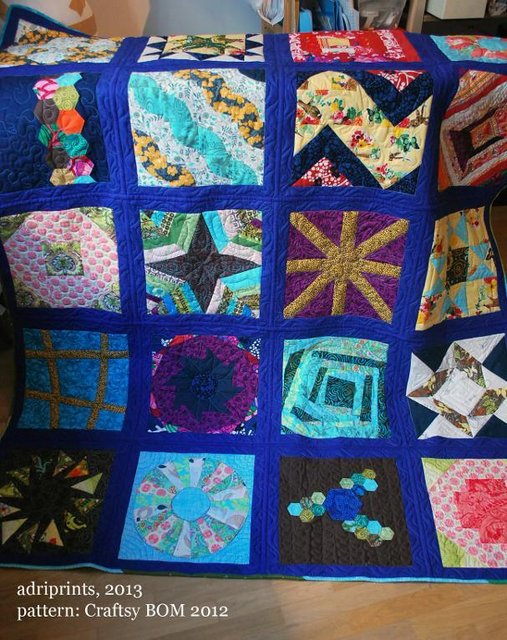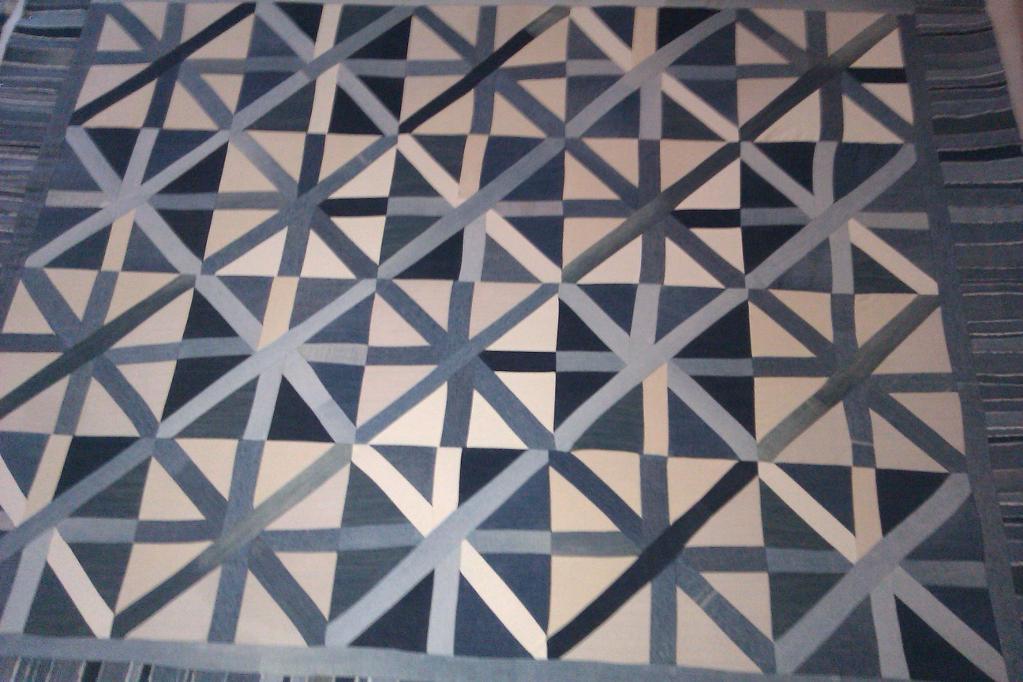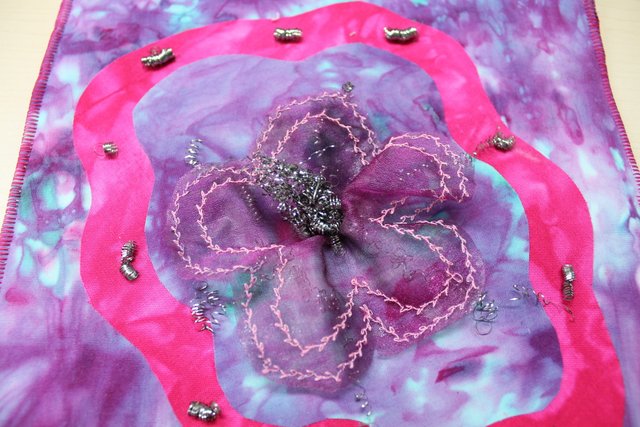As quilters, we often reach that point where we want to expand our horizons and try something new and different with our quilting. One idea more and more of us are turning to is adding unique quilting fabric to our designs. The soft feel of flannel, the sheen of satin or the texture of organza. Whatever type of fabric we choose, it will surely give the quilt a special texture and cause the eye to delight in the visual appearance.

Blue Sampler Quilt via Bluprint member adriprints
As much fun as it is to sew with different types of fabrics in your quilts, there are a few suggestions that can be made before you run into trouble. First, you want to know what type of needle you are going to have to use. Is there a problem with fraying you will need to take care of? What about a fabric running? I find you really have to watch lining fabric, it can get one little pull and before you know that thread has traveled right across the length of fabric making a big run. Cheesecloth is becoming more and more popular especially on art quilts, but watch the unraveling.
Let’s give some tips to help navigate your way around using different fabrics in your quilting.
Denim
Whether you are ripping up your favorite pair of old jeans for your quilt, or have just purchased a yard of denim at the local fabric store, this fabric is tough and durable. That is one of the advantages of using denim in quilts, it has the strength to encourage a long life of the quilt and it can withstand heavy use.

Denim quilt via Bluprint member AngieSue
The most difficult part of denim is how thick it is, and sewing two or more layers can be cumbersome on your machine.
Make it as easy as possible by always using a denim needle, these have a stronger shaft, slim eye and a very sharp point. After stitching a seam together, press the seams open. This step is unlike cotton, where you press both seams in the same direction. This would give your denim quilt too much bulk.

Photos via Jackie’s Art Quilts
Sheers
When quilting with those light slippery fabrics such as organza and satin, things can get tricky. If it won’t change the appearance you want, consider using a fusible interfacing on the back of the fabric. If it is the see-through look you are going for, use a water-soluble stabilizer. Sulky is the most common one on the market. This water-soluble plastic-like material can be used to sandwich your light fabric in, and then once you’re done stitching, it simply dissolves as you rinse it with warm water.

For quilting with such lightweight fabric, you are going to need a very small needle, something like an 11/75. If you find that the needle is still making a snapping sound when it pierces the fabric, try an even smaller needle.
Cotton and a specialty fabric
The rules for fabrics can get a bit confusing when you are using two different types of fabric. A rule of thumb is to work with the fabric that has the most idiosyncrasies. If you pair up cotton and denim, use a denim needle and press the seams open. If working with cotton and a sheer, use a small needle. If you go really crazy and pair up a denim and a sheer, have a small sample to practice on first, and don’t be afraid to experiment.

Blue Sampler Quilt via Bluprint member adriprints
The quilt above shows cotton, chambray and linen.
Tips
- Remember that not all fabrics can be ironed directly. Ensure that if you are pressing your quilt, that you have tested all the fabrics first and know if they can handle the heat of an iron. You can always try a pressing cloth as well if some fabrics don’t take direct heat.
- When using materials that tend to fray frequently like some linens or cheesecloth, cut a bigger piece than what you need and put tape over the edges to prevent fraying as you sew. When you near the last steps using the fabric, cut it down to the actual size needed.
- Spray starch on some of the more slippery fabrics, then iron prior to sewing. This helps get the stitches remain consistent and even.
Whatever you try in your quilts, have fun with it! It is the quilt journey that creates the best memories. Find fun new ways to put your leftover fabrics to use in this FREE PDF scrap quilting guide, available exclusively on Bluprint.

Get Your FREE Scrap Quilting Handbook!

Share tips, start a discussion or ask one of our experts or other students a question.
No Responses to “Expand Your Horizons by Using Unique Quilting Fabric”